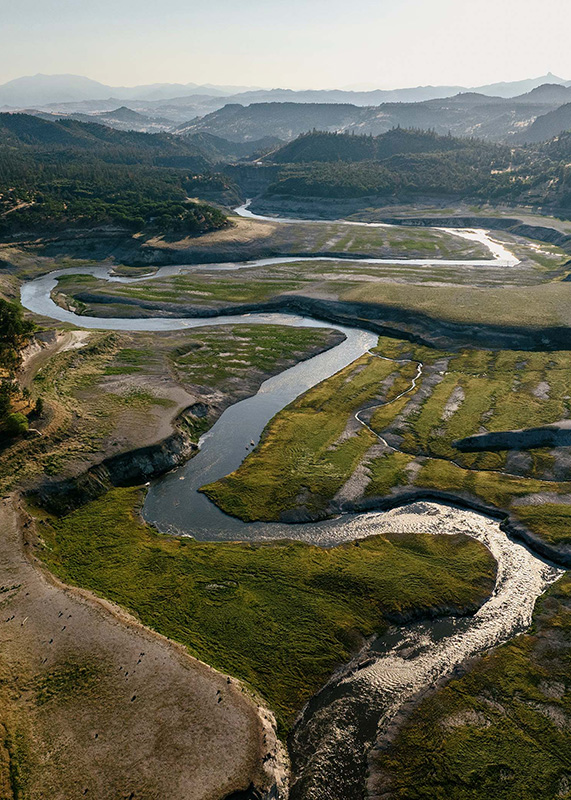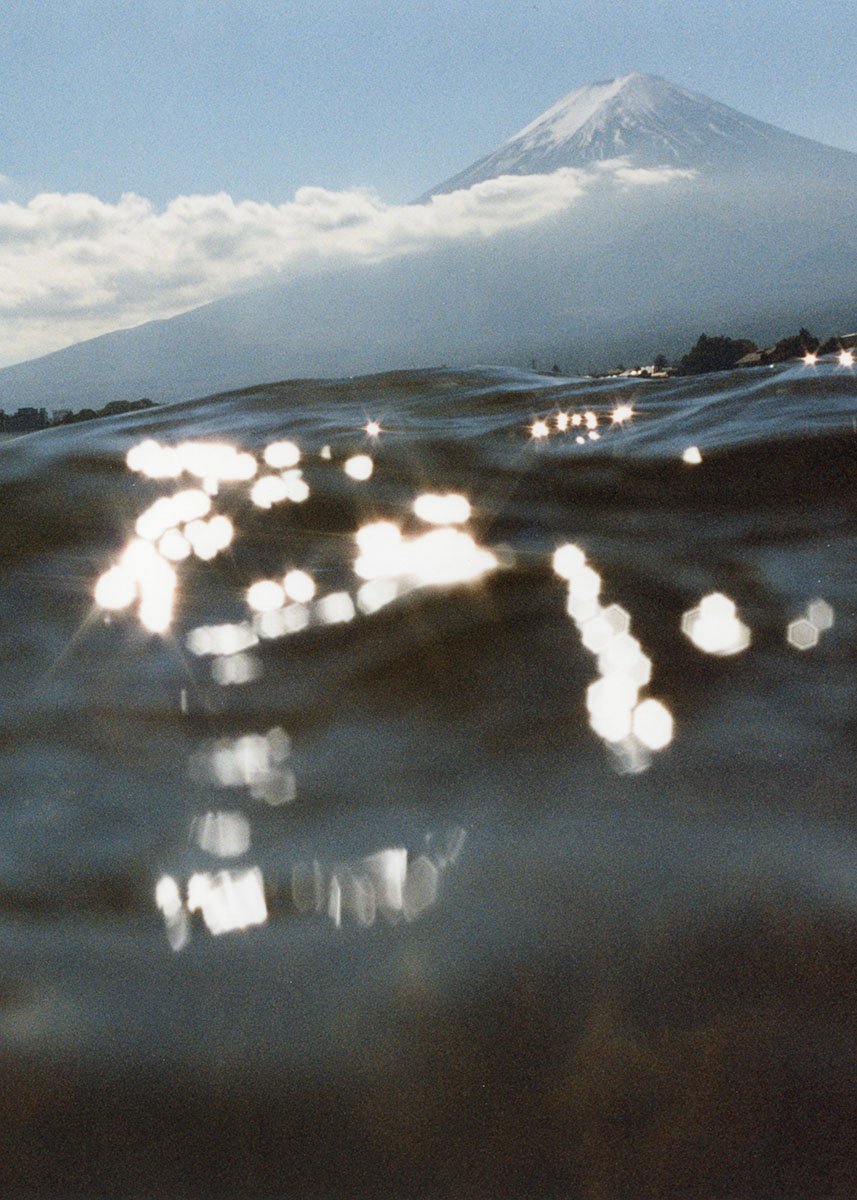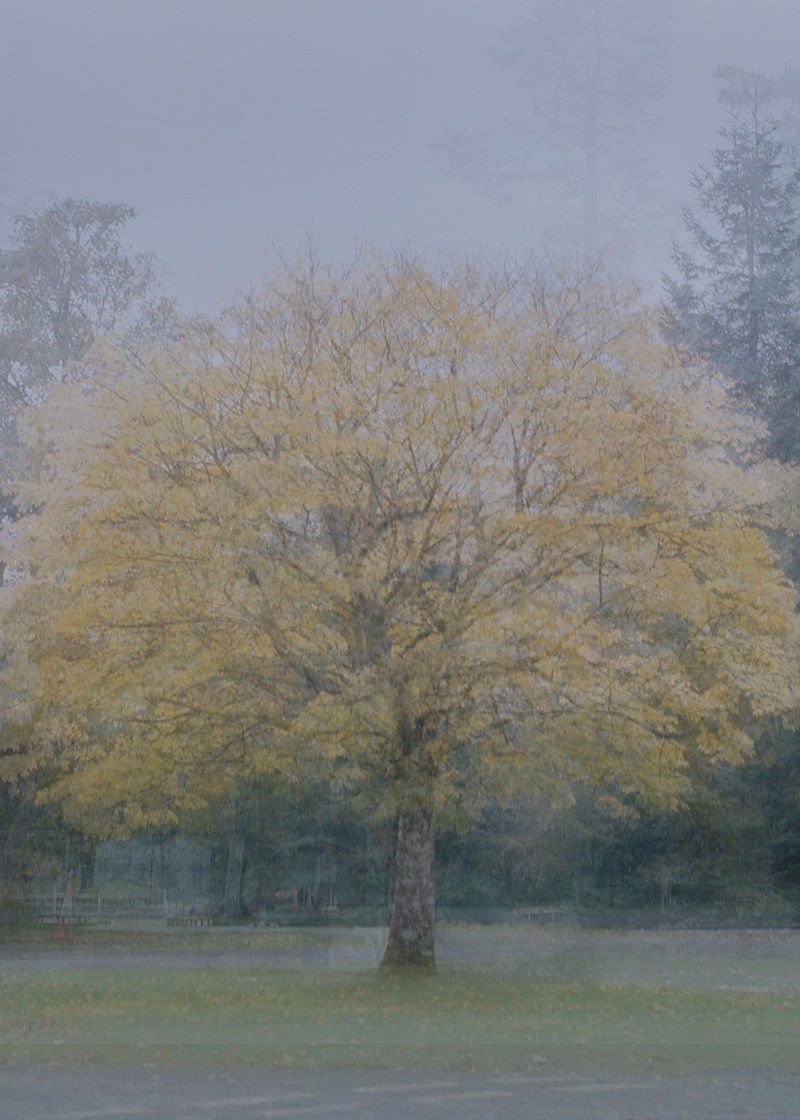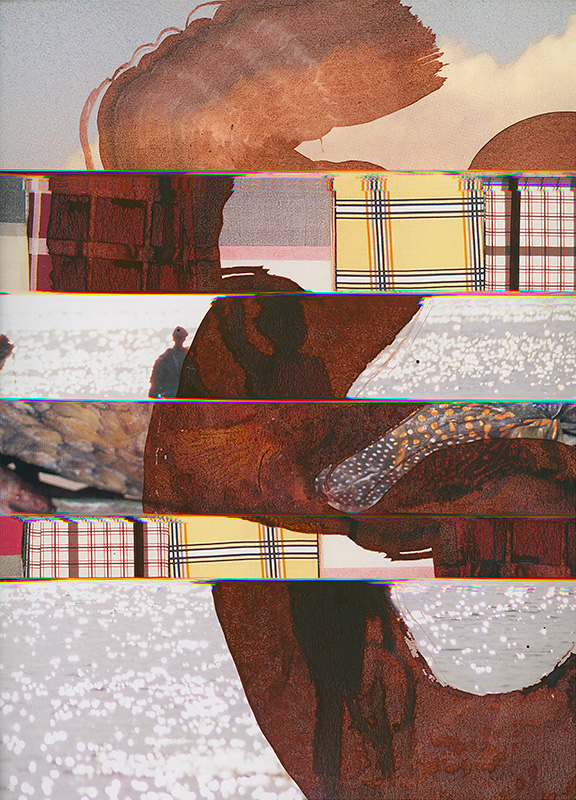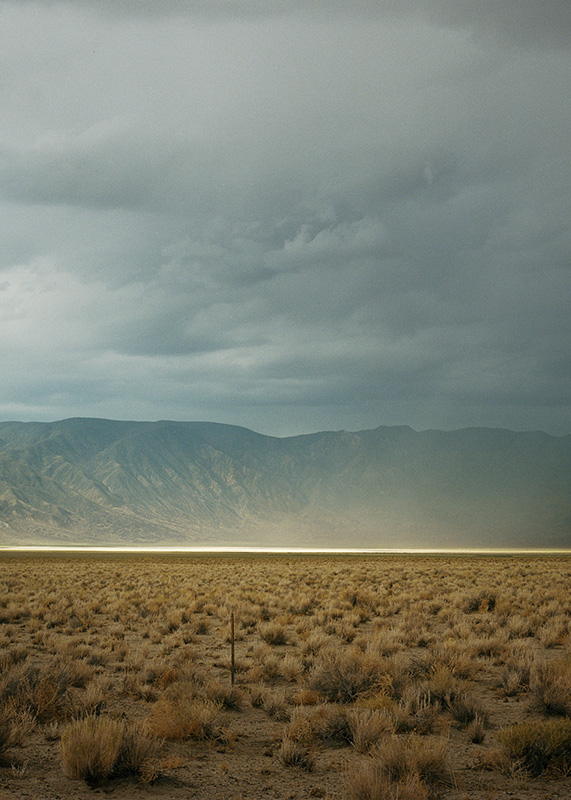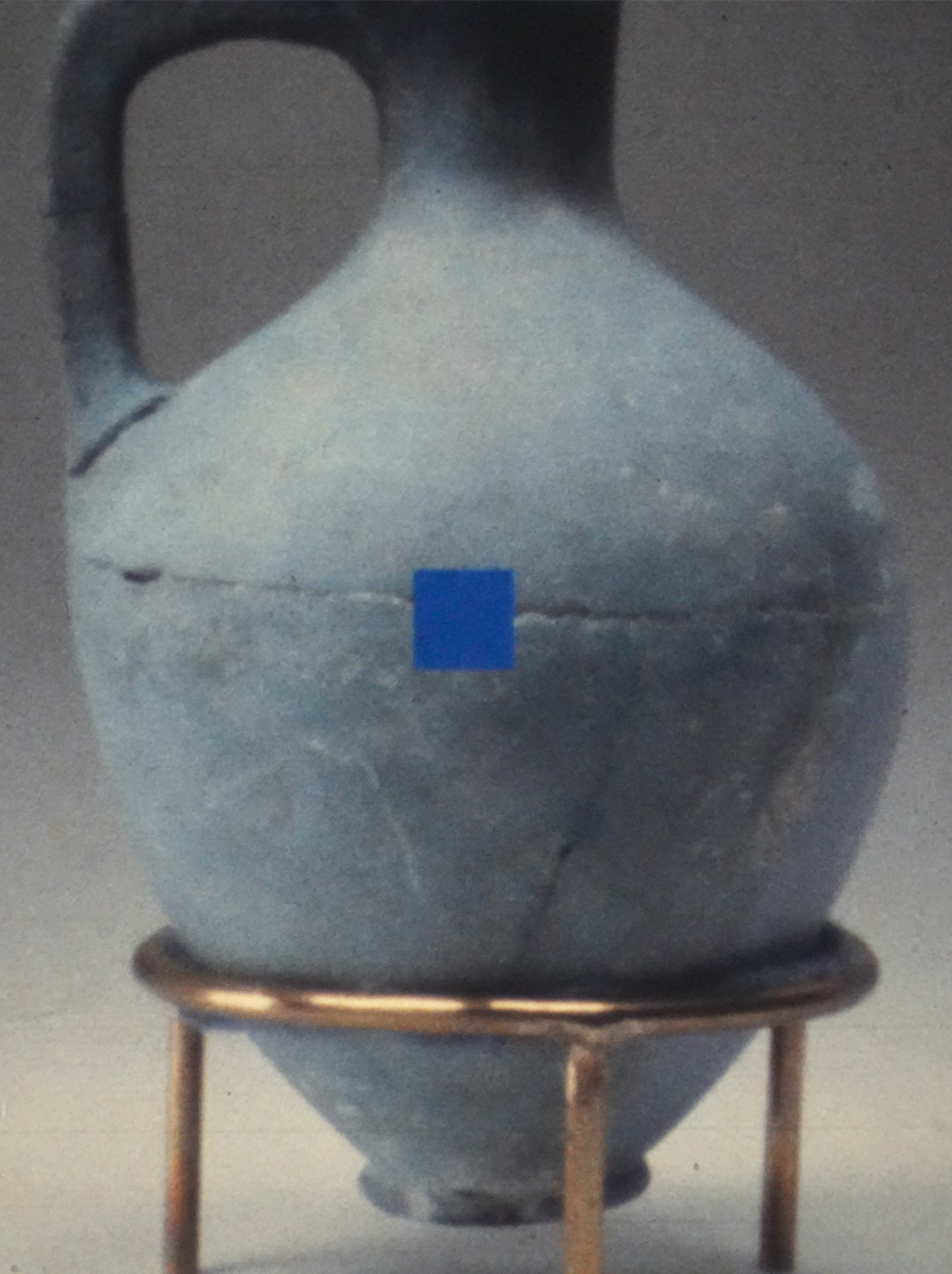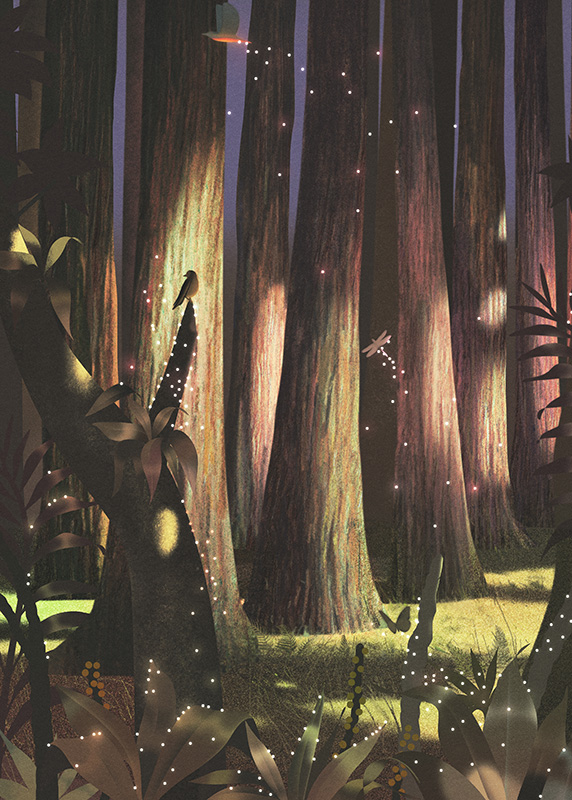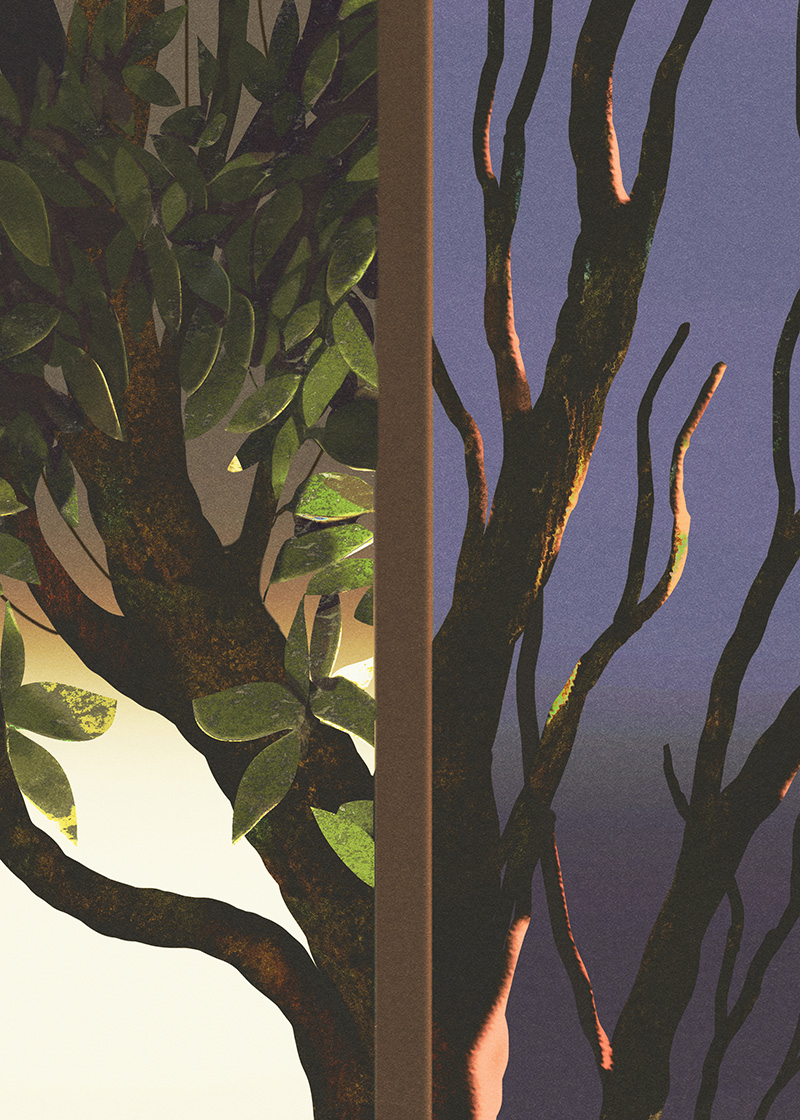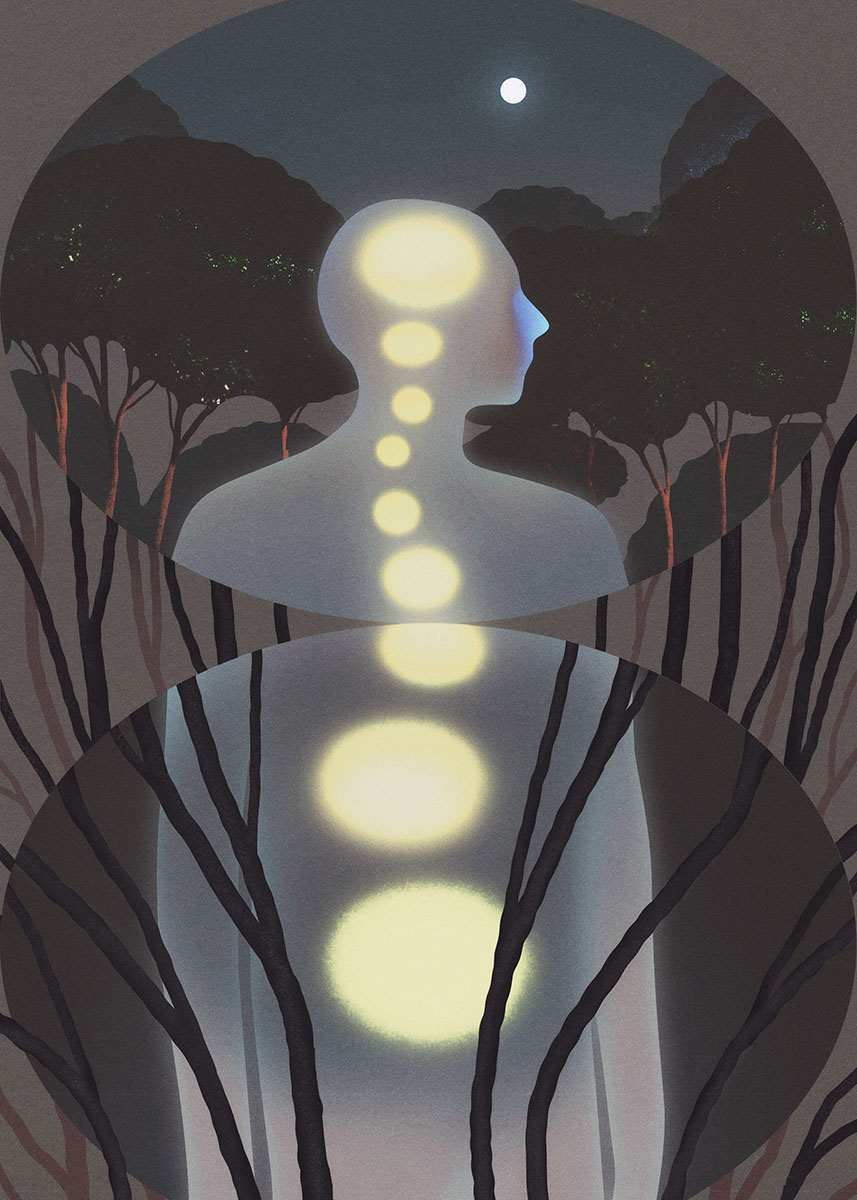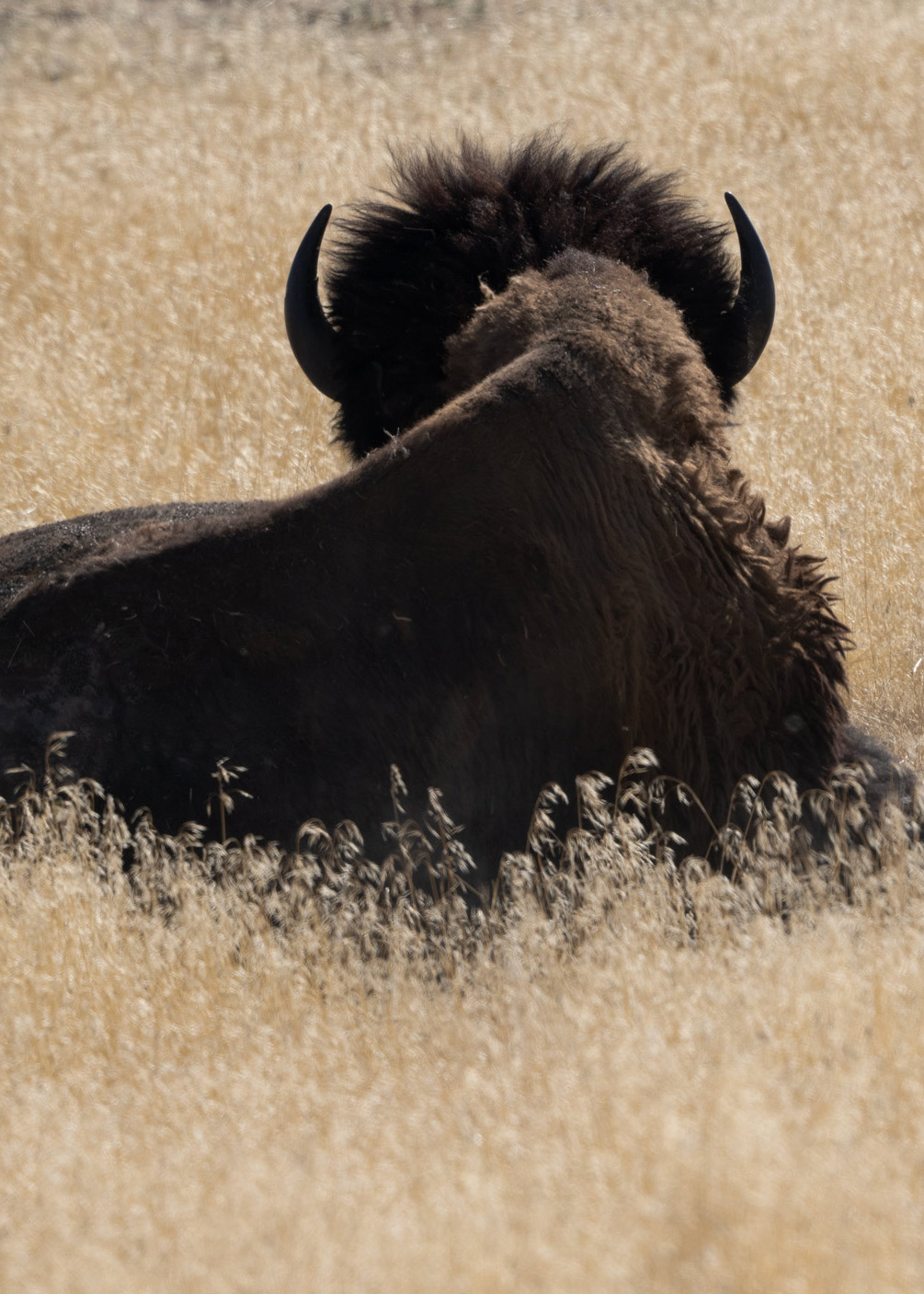
CMarie Fuhrman is an author and poet, whose work is rooted in the landscape of the West. She is the author of Camped Beneath the Dam: Poems and co-editor of Native Voices: Indigenous Poetry, Conversation, and Craft. She has published poetry and nonfiction in multiple journals, including High Desert Journal, Yellow Medicine Review, Cutthroat A Journal of the Arts, Whitefish Review, Broadsided, and Taos Journal of Poetry and Art. CMarie is Director of Poetry for the graduate program in creative writing at Western Colorado University, where she teaches nature writing and is a regular columnist for the Inlander, an editorial team member for Broadsided Press, and nonfiction editor for High Desert Journal. She resides in the mountains of West Central Idaho.
Gabriella Trujillo is an illustrator from Southern Colorado. She received a BFA in painting from the University of Colorado and studied at Università degli Studi della Tuscia in Viterbo, Italy. Some of her notable clients include NPR, The Atlantic, and Southwest Contemporary. She currently lives in Northern New Mexico.
CMarie Fuhrman encounters a coyote whose leg is caught in a trap in the southern Montana prairie. As she decides what to do, she navigates the two legacies of her identity—Native and European. In doing so, she considers what it means to be trapped and what it means to be free.
Autumn, beartooth front country. The sky and landscape are buckskin and blue. I am driving my Ford pickup down the roads that encircle the ranch I am living on, caretaking, though little work other than keeping a fire going and feeding the owner’s horses is required of me. I am an hour from the nearest town of mention. From almost anywhere on the ranch, I see no neighbors. I am out driving just to be out, to be looking across the vast distances that have always filled me. This is a land devoid of structures. Of obvious human intervention. Here, I can imagine. I can dream without intrusion of even a fence line. And those dreams are never lonesome things. They are filled with stories. Memory. The call of meadowlark. The huff of a doe muley. The song of coyotes. All my insides find home here and resonate back to me in the enormity of a southern Montana prairie.
I come up over a small rise, and, in the distance, I see something jump. Once, then again. An awkward jump. Almost sideways. Almost a pounce. At first, I think I am seeing a rabbit. Perhaps a fox. But the color is wrong. The size. I press down the brake and reach for my binoculars, bring them to my eyes. As I turn the thumbwheel, a brown coyote comes into focus. It throws its head back as if tugging. Pulling against some force that holds it in place, yet I cannot see what. I lift my foot from the brake and roll forward.
I don’t know when I realize the coyote’s left ankle is caught between two horseshoe-shaped jaws of a dull silver trap. I walk from the truck to the coyote. Each step in the reddish-brown soil raises puffs of dirt around my feet. As I grow near, I see how fragile the coyote is, thin; how like my dog Katie’s are its amber eyes. Then I see the blood in the soil. The swelling and rawness of an ankle chewed. The coyote had dug at the trap with its free paw. Its mouth a mud of blood and froth. As I draw closer, the coyote begins to growl, to bear its front teeth.
I walk a circle around the animal. I look for ways to spring the trap, but traps such as these are not something with which I am familiar. My breath and words stick when I talk to the coyote. Only platitudes escape. I look toward the passenger window of my blue truck. From inside, my dog Katie is looking out at me, her eyes begging the question: What are you going to do? One dog in my truck who needs my protection and one at my feet who inherently knows I am not to be trusted.
The sky on that day was the color of the paper on which I write this story. Not white, not gray. Caught in the middle somewhere. The color of possibility here, but not when enshrouding the gruesome scene unfolding on the prairie. The sky that day held certainties. The story for the coyote could have only one ending. Winter was coming; there was no doubt about that. The clouds spit and its drops were cold and sharp against my face.
I keep recalling that day. I keep coming back to the coyote story not because I think I could have done anything different; the fate of the coyote was set in motion when the first white people came west, and it was handed down through the men and myths that made the man from the town of Bridger who set the trap on that barren hillside, placed a bit of ground beef around it, and yawned open that metal mouth. I would never meet that man, but he would find my reply to the question of his bait. He would—in the prints I left in the dirt, in the metal I destroyed with a maul—know my anger. Yet I was the one guilty of trespass. The law protected his right to trap. To mangle the leg of the coyote, to let it suffer, bleed, and starve for hours, days. My only witness was the prairie. I keep coming back to the coyote story because I forget how it ends for me. There are so many possibilities, but writing it here will set us both straight.
And I keep coming back to the coyote because I work in metaphor. Symbol. I see patterns. I find story. The first story is of the coyote and me. The next belongs to those I called in the hope that we might save the coyote. The county vet, who would later corner me in my barn when he came over to float my mare’s teeth, denied me any help. My friend Ron, from a thousand miles away, assured me there was nothing else I could do. The third story died with my dog Katie, who I am certain consisted entirely of story. She watched intently that day through the closed window. I do not pretend to know how she translated what she saw, but I am certain that when I got back in the truck, the cursory sniff she gave was not so she could catch a scent of her wild cousin, but to be certain it was I who sat beside her and drove us back to the house. I left the coyote as I found it, and put Katie in my bedroom. I could not bear for her to witness what happened next.
Writing teachers have encouraged me not to anthropomorphize nature, while my elders tell me that we, nature and I, are the same. I tend to write on the side of elders. I believe that trees exhibit emotion, and I am haunted by a young doe, whether sister or mate, who walked around the corpse of the newly shot buck, unable to leave his side out of a devotion I fully understand. And the buck’s meat wasn’t filled with the bitter taste of regret but filled me with a desire to live a life worthy of its wild sustenance.
Yet another story. A metaphor, a reminder of how, for an hour after my husband had drowned, I lay beside him, holding him, unwilling to let his body be taken from me. To be carried off not for sustenance, but autopsy. Cremation. We die so many times in one life. A certain sky that day, too. I did not anthropomorphize the river that carried his last breath away with so much spring runoff. I did not hope that it would somehow consider me and my pain as it did. Though now that I am older, now that I have known twenty more years of rivers, I might tell you they are the most abiding, always returning what they take. Somewhere, off the gulf where the spring runoff finally met with the sea, I believe I retrieved my husband’s breaths and made them mine.
Older now, twenty or more years, I come back to the coyote story. And I have known some coyotes since, both those taught to me in traditional stories and those who met me in the wild, rearing dens of pups a fifteen-minute walk from where I now live. Katie was old when she met those coyote parents. We were jogging. They came out from the brush and ran alongside us. It all happened so quickly that I still don’t know if it was providence or omen. They did not try to bite either of my dogs. They only paralleled us in the brush and barked as if ushering us off. They were protecting their kin. We had trespassed. The dogs, I will not say, dwelled on that. But I did. Being human in the West, in the moderately wild places I live in, is a threat. No matter how kindly and carefully I walk. The deer will tell you that. The coyote. In the spring, when I am hiking and not hunting, I tell the animals who stop to gaze at me as I gaze back in adoration that I am not to be trusted. I am two people. I will be seeking a different sustenance in a few months. I try to live in a way so as to deserve that.
Along the Salmon River in spring, in a place where the previous fall I had hunted deer, I once met a young buck and doe. As if I were joking, for I thought I was, I told my partner to stop the truck and ready the camera; I was going to get out and pet them. I stepped out of the truck and walked up to the pair. In no time, I was scratching them behind the ears, and they were gently nudging me with their heads. Trying to play. The picture my partner took shows an undeniable happiness. Joy. My arm around the buck, the doe with her nose to my cheek. Would the deer, anthropomorphized, title this picture Forgiven? My practice of hunting has not changed. Nor that of praying that the meat I take is ingested by someone who lives a life well enough to deserve it. But who’s to judge guilt or innocence? “I contain multitudes,” Whitman writes.
I have known other coyotes as well, albeit from a distance. Along roadsides, through scat, at night in song, and this winter, on the eve of my forty-eighth birthday, from a rock above the San Juan River near Bluff, Utah. To my right, hundreds of paintings and peckings left by thousands of years of visitors to this place. To my left, Navajo land. It was late December, but the sun was strong. We, lizard-like, stretched out on the warm rocks and watched as the water rolled by like hammered silver. First, a foursome of ducks came floating along on the current. When they were startled, splashed, and flew off downriver, we spotted the source of their fear: a coyote wandering out of the thick invasive tamarisk. Then another. And behind them a mostly black angus ambled out, a yellow tag punched in its left ear. They all walked to the edge of the San Juan and drank together. My dogs watched intently, quietly. The coyotes did not notice us, or if they did, they didn’t care. They had the river on their side. I raised my camera and took a picture of the threesome, and then, as if called, all three turned and walked back into that dense brush. The picture, no matter how you look at it, shows three coyotes.
Traditional stories about Coyote are about a trickster. Mocking stories. Moral stories. Coyote made human. Anthropomorphic. In other stories Coyote is protector. His antics a way to keep the other animals safe. We don’t tell Coyote stories in summer, so I will not go on, but you should know that, at least in my grandmother’s stories, magic surrounds Coyote. Is there a reverse process for anthropomorphizing? Do animals give animal traits to humans in an effort to live better? To understand us? Would the coyotes on the riverbank tell stories about the humans lounging on the rock? What would the moral or lesson be? Would the coyote see the two people in me? My elders would say that Coyote and human are one. The same.
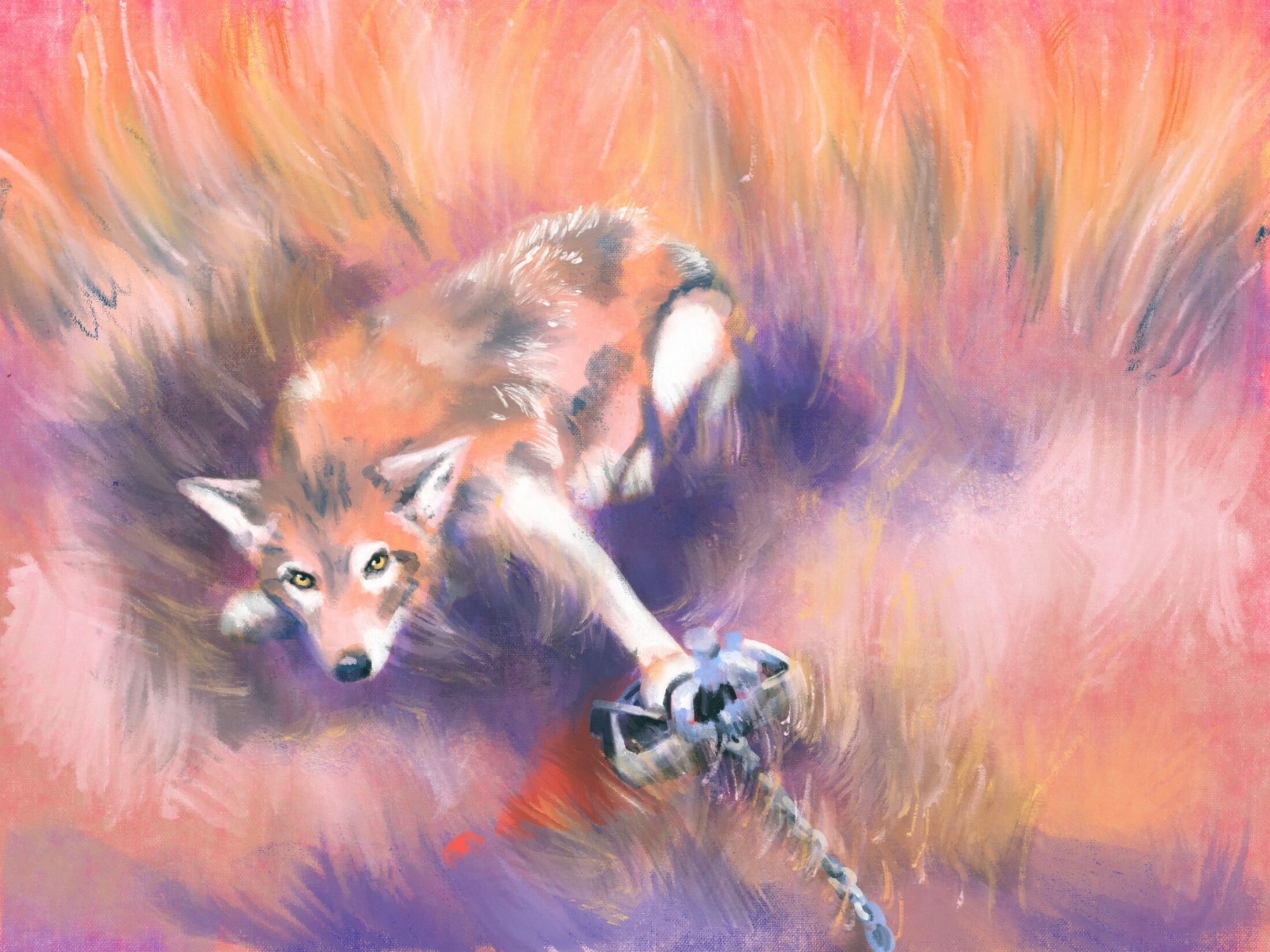
I think often about the two people I am. Is that all of me there is? Can I discern one from the other, or have I gotten too close? A friend once asked how it was that I pulled the silver trigger of my .30-06 when it was pointed at the right shoulder of a cow elk on an early winter slope. Something else took over, I told her. I had clicked the safety off and then back on a dozen or more times. My finger moved as delicately past the trigger guard as it does when tracing the bone of my lover’s jaw. I am two people. The other one pulled the trigger. The one who writes on this sky the color of month-old snow pushes the “U” key on this keyboard with her trigger finger. Draws it to my lips to say shhh when the dogs bark at the sight of a bear and her cubs. Maybe within me are two survivors. One that kills and one that cleans up.
There is a metaphor for my life in the river story. The one about the coyote and the cow. It is about my biological parents. One Native, one European, Italian. This is the story I was told. The story of me. I am of two people. Colonized and colonizer. I am of two continents. Maybe more. When do I bring them together? How do I set them free?
The story of the coyote in the trap is one I come back to as I write about Native women. How the law protected the trapper. Allows sufferings. The removal of pests. Not more than an hour’s walk from where the coyote was trapped is the Crow reservation. A wild horse refuge. Everywhere there is story. Ice caves. Native women have been disappearing by the thousands. There is no record of this in federal courts or by police authorities off the reservation. The highest number of disappearing women occurs near man camps. Those temporary lodgings set up for oil field workers in places such as Williston, North Dakota. Under white skies. The county vet would back me into a corner in the barn and say that now my husband was dead he could help me, could take care of me. I hid in the basement when he came to my house, my right finger to my lips asking the dogs to shush. My grandmother prays for all our relations.
Is mine the narrative of the West? In this story I am Crazy Horse; in others I am Columbus. Which one, my friend asks me, pulls the trigger? How do you know who to trust?
I keep coming back to the coyote story because I shot the coyote. Twice. The first time I tried, I stepped out of my truck with a .40 caliber Smith and Wesson handgun in my right hand. I carried it against the flesh of my right thigh. When I got close to the coyote and the coyote paused, I raised the gun. I am trained in firearms. Captain of the pistol team in college. I am made of two countries, one colonized and one colonizer. I don’t know which one bought the gun I raised; I was close enough not to need to look through the sights. I cupped my left hand under my right. Pointed it at the dog. For that is what it is in the end. A dog. My Katie was in the truck behind me. Watching. I’ve known no truer friend.
In this story I am Crazy Horse; in others I am Columbus.
Older now, I come back to the coyote story. I have killed deer and elk since then. I write about the Native experience. About Native women’s bodies. I went to a college built on Nez Perce lands and colonial ideals. I bonded with white mentors and argued with white men who told me the land is not stolen, that the Indian was conquered. I am called squaw by those who think that word can control me. I am asked if I am Mexican or, once, Greek. “What’s your bloodline?” I was asked once. As if a horse. We are the animals, my elders say. We are many people in one. It was a dog. We should not anthropomorphize. Show, they kept telling me with my poems, don’t tell. I am telling you the story of the woman who shot the coyote. Twice.
I could not kill it, you see. Not with the pistol. My right hand started to tremble. Eyes amber like my Katie’s. I drove the miles back to the ranch house and left Katie inside my room and took my .30-06 from the wall. The .30-06 I would use, years later, to kill the cow elk. The same rifle I bought for my late husband the Christmas before he died. I drove the bumpy road back past the place where I first spotted the animal. Past my innocence, my naivete. I parked twenty yards from the coyote and cut the engine. I never closed the door after I got out. I just lay my breasts against the warm of the hood and placed the coyote’s head in the fine crosshairs of my rifle; my finger slid past the trigger guard to the trigger and I pulled it. Something else took over.
But my shot was hasty and ill-placed and hit the coyote in the back end, blowing apart its hind leg and rendering it motionless, but alive. I keep coming back to the coyote story to try to find out who it was that tossed the rifle back into the pickup and pulled out the pistol, crossed the short distance between us, lay the muzzle of the .40 to the soft spot of hair beneath the coyote’s left ear and pulled the trigger.
I am two people. One who kills. One who cleans up.
Perhaps there are more. Countless others. Like the river that carried my husband’s breath back to me, and also carried the breaths of all the lives it claimed. We are in and of the world, the elders tell me. I contain multitudes. I drank the river that came from my husband’s mouth and carried on my hands the blood of coyote and elk. I can smell the breath still of the county vet and Katie’s paws after she ran in grass. Every death is a loss and every memory a birth. How many times can we die in one life and still breathe? I come back to the coyote story as a metaphor for the West. I come back to the story of the coyote for the story of myself. Sometimes I am the one in the trap, unable to chew off my leg, unwilling to simply die. Somedays I place the bait. Both metaphors are mine. If coyote are anything, they are survivors. We are one, the elders sing.
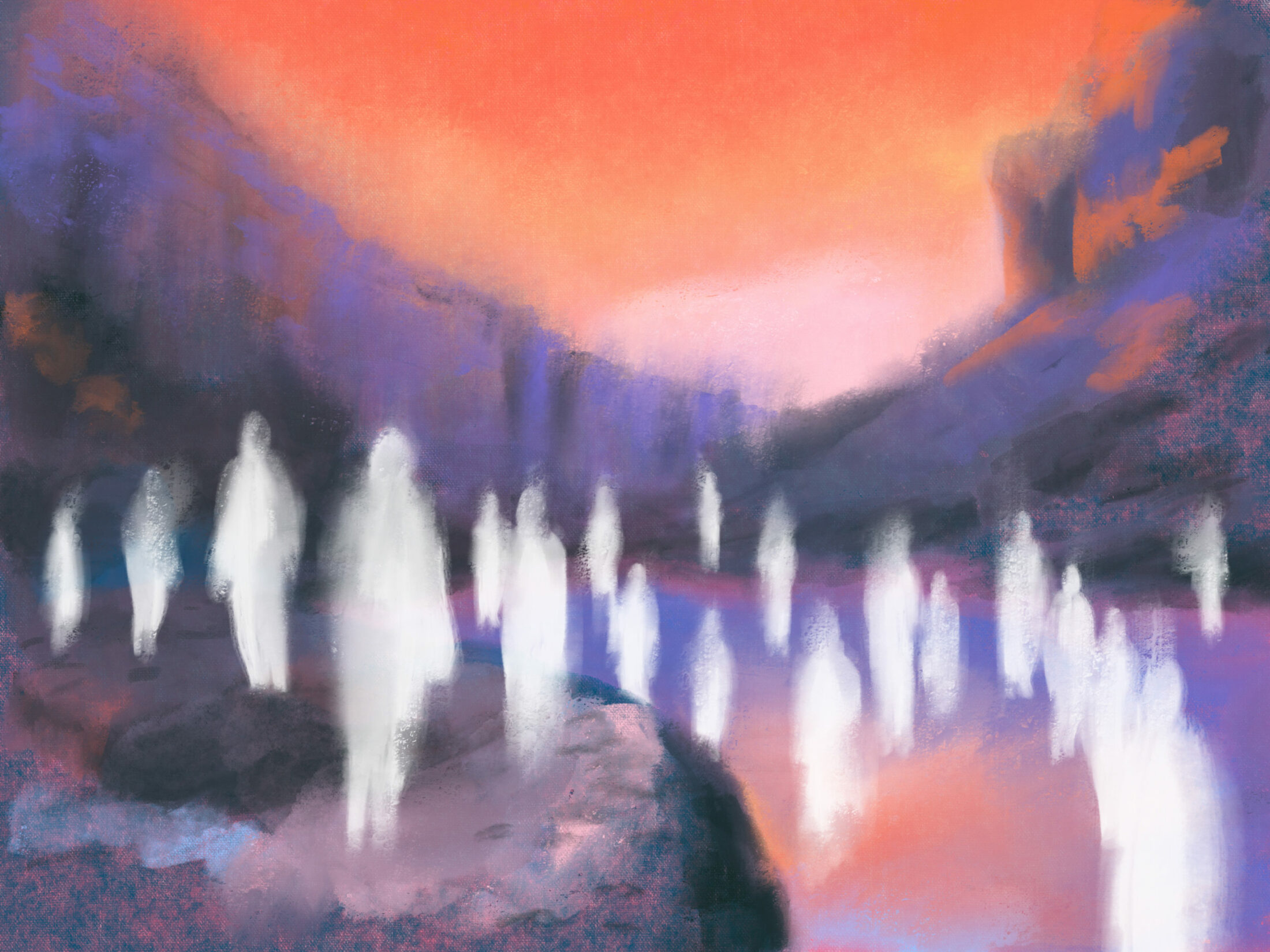
I keep coming back to the coyote story to try to remember the moments after killing the coyote with exact clarity. I must get it right. Sometimes I see it as if I am watching myself from a distance. With the coyote’s eyes. Through Katie. From behind the safety of binoculars and windshield and scope. I couldn’t shoot the coyote with my pistol because something in its eyes, amber like Katie’s, reminded me of a familiar desperation. From a distance, I couldn’t see that. Until I had to. The muzzle on the soft spot below the ear. The temple. So much like our own. I come back to the story because I still don’t know who I killed that day in the Beartooth Front Country. I don’t know if mine was an act of benevolence or mercy.
I’ve never returned to that place, not physically, where I killed the coyote. It is lost on the prairie, but perfectly mapped on the landscape of my memory. I sold the old blue Ford. Katie is dead and buried in the woods beyond my house. Two new dogs are in my life. Another man. The county vet, I am told, ran off with someone else’s wife. But that doesn’t mean he doesn’t haunt me. Or that I don’t harbor the ghost of the coyote.
But now all the stories are mine. And in this one, the coyote dies. There was no other way for it to end. Its fragile leg is the leg broken in the trap pinned to the earth on a small rise in south-central Montana. A person in a blue truck pulls up and the coyote, who knows nothing of mercy, is right to be afraid of this two-legged. The coyote feels more pain before its final release, staring into the green eyes of its destroyer as it dies. The coyote does not anthropomorphize: it knows me only as predator; it sees only one human. In another version of the same story, the coyote lives, though the teller has to imagine the animal free even if she is no less dead. The woman gets back in the truck, the broken body of a dog—for that’s all it really is, isn’t it?—lying on the seat beside her. She strokes its fur as she drives, sings the songs her grandmother taught her, and where she finally buries it becomes story.

